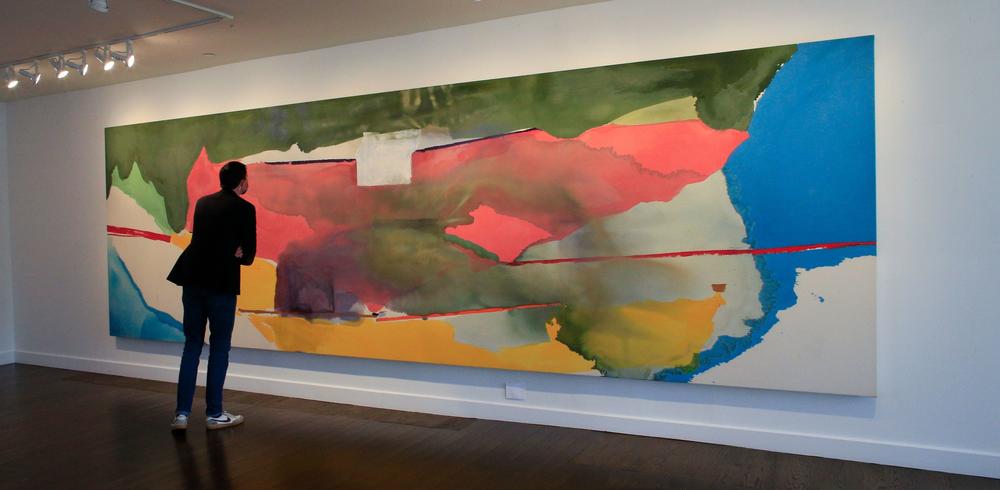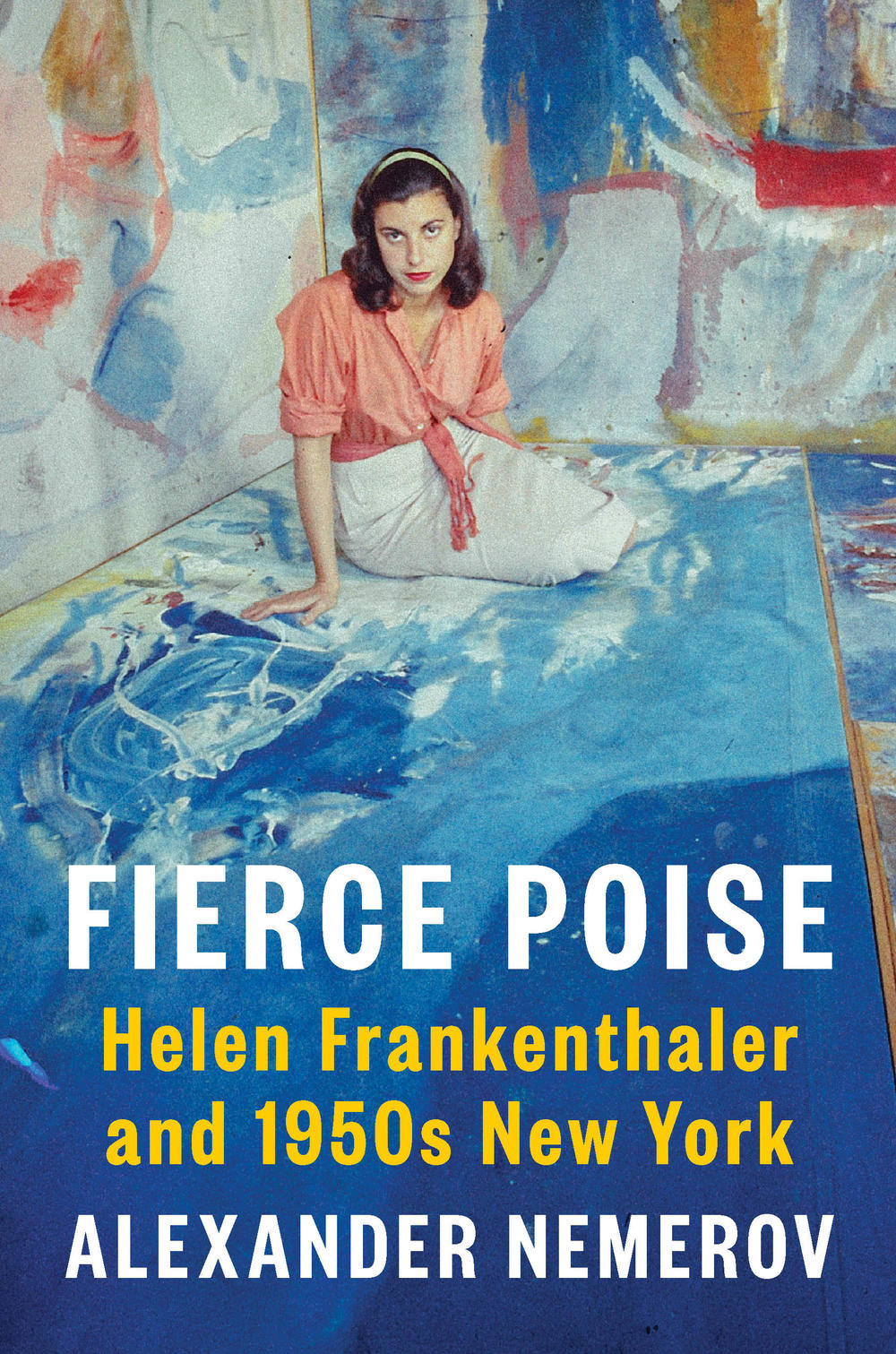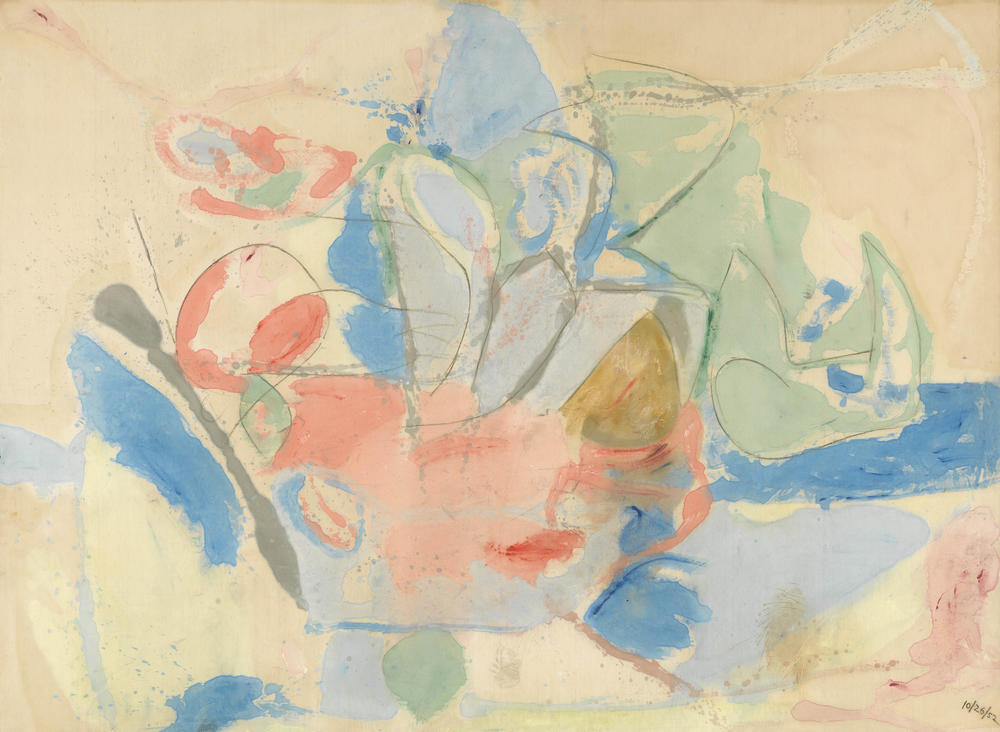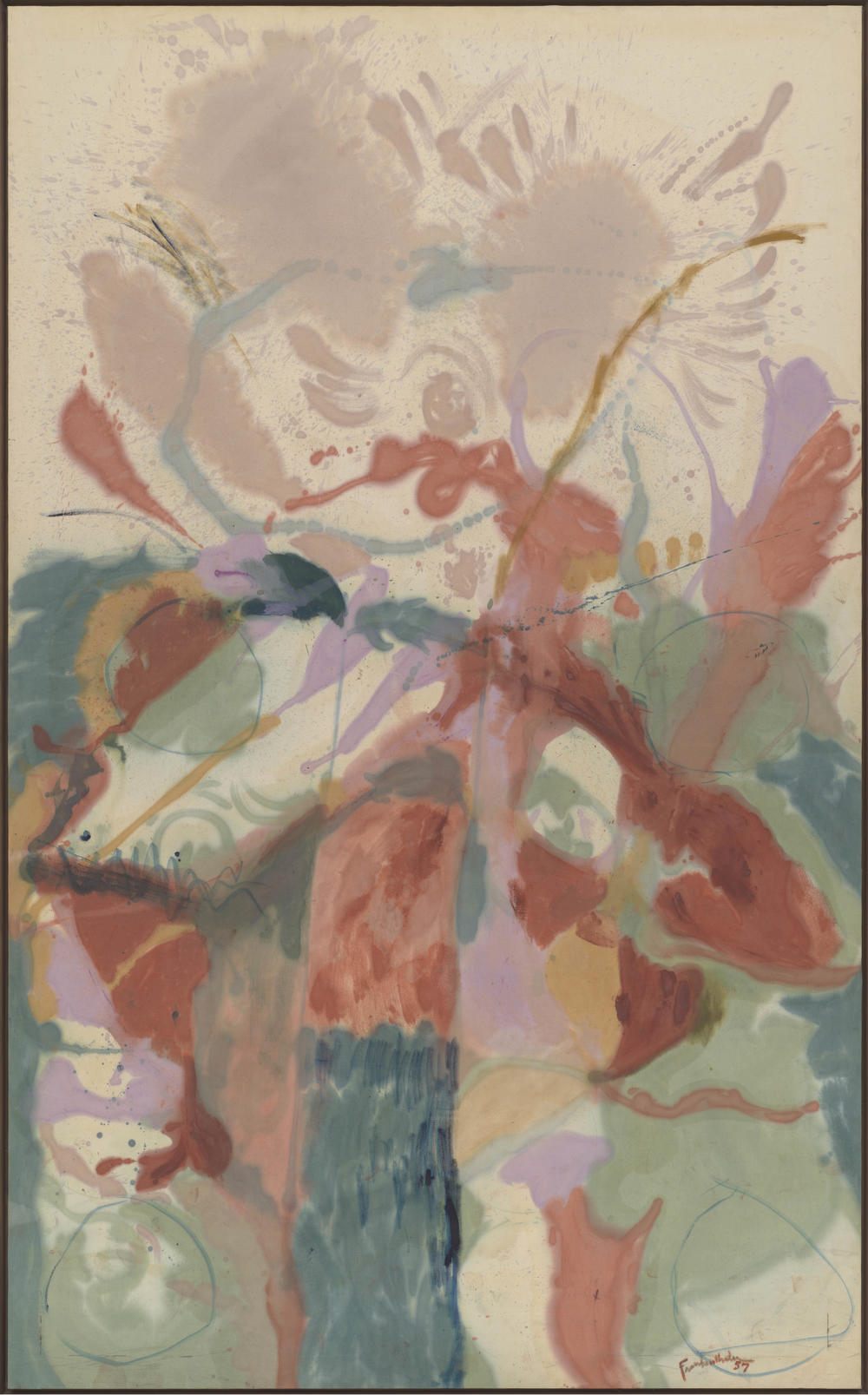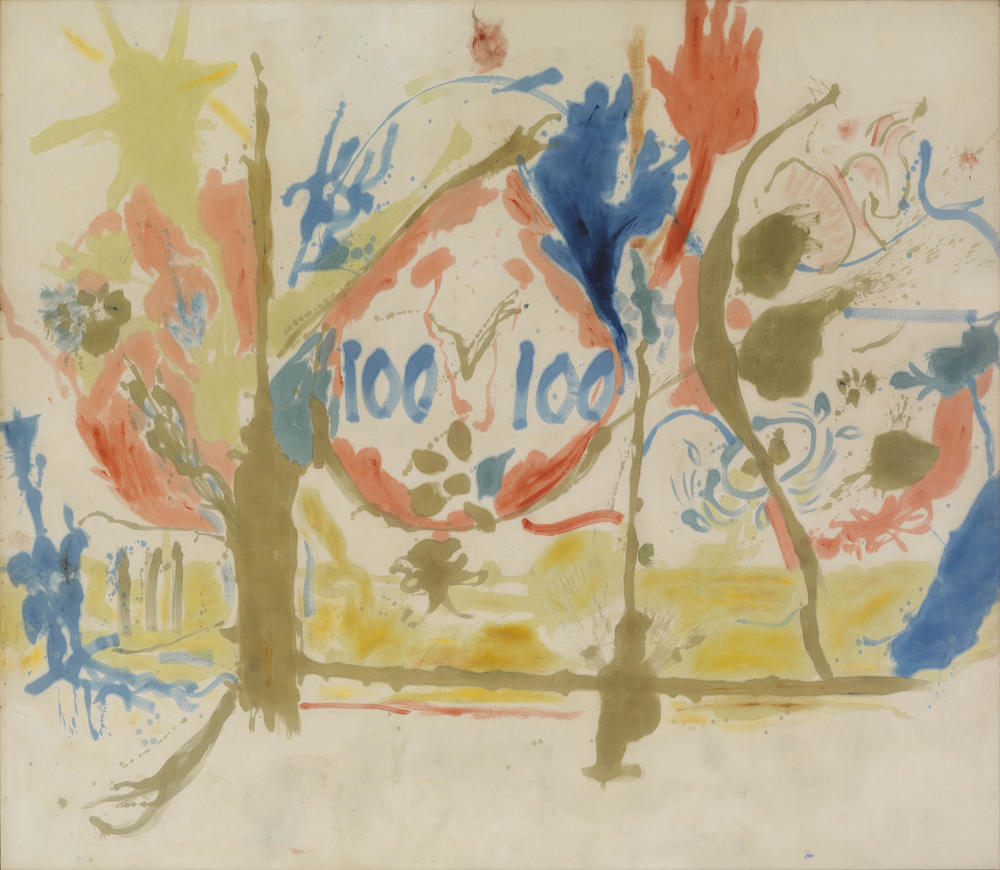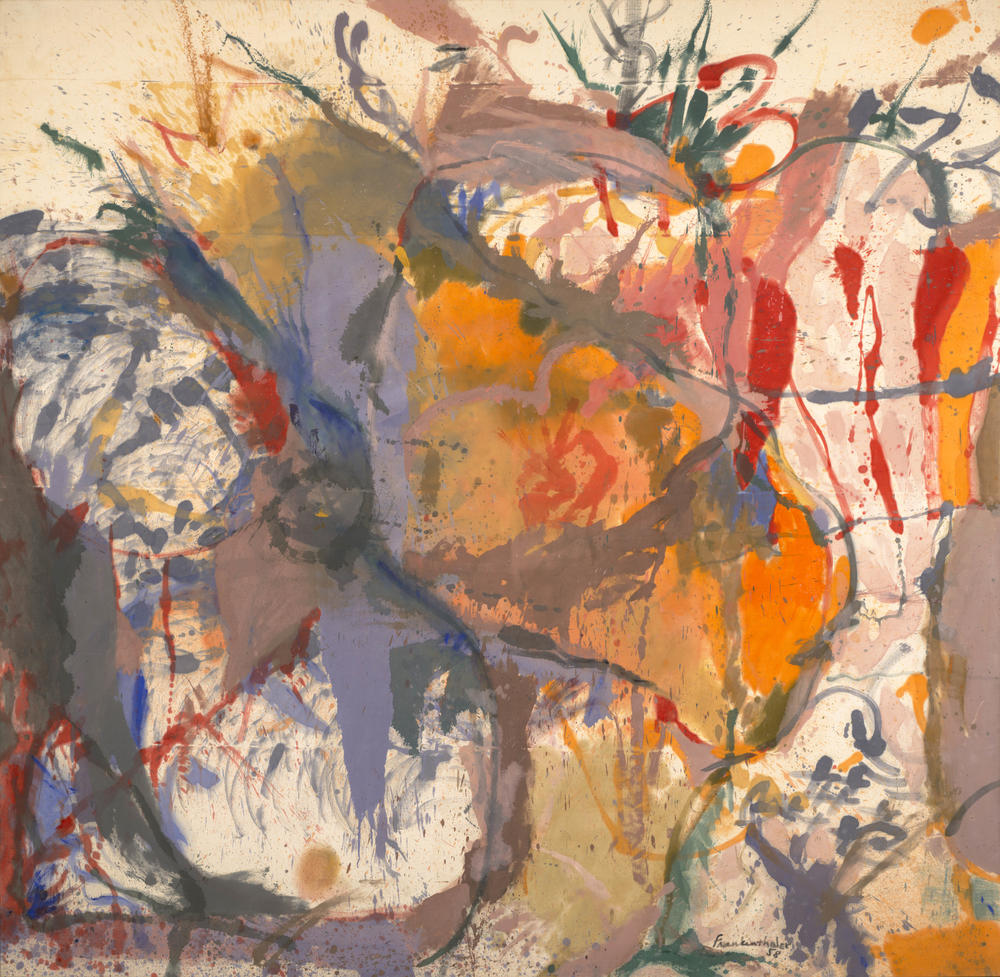Section Branding
Header Content
With 'Fierce Poise,' Helen Frankenthaler Poured Beauty Onto Canvas
Primary Content
Powerful, no? And gorgeous. Helen Frankenthaler did it in 1973 — 20 years after making a painting that took Jackson Pollock's abstract expressionism a step further. In 1950 she was wowed by the ropes and squiggles of paint Pollock was wrestling onto unstretched canvas on the floor of his barn.
"She realized what was possible," says Alexander Nemerov, author of the new biography, Fierce Poise: Helen Frankenthaler and 1950s New York. "She'd never seen that degree of freedom." She quit doing careful faux Picassos, and, Nemerov says, "she made a kind of art that hadn't been done before."
Instead of roping and lassoing and dribbling paint a la Pollock, Frankenthaler poured pools of highly diluted pigments onto her raw canvases. The thinned-out acrylics soaked into the fabric — stained it in veils of color. In 1952, with Mountains and Sea, she had her breakthrough. The picture had a "brazen yet gentle freedom ... " Nemerov writes, "this sense of art spilling out."
I love origin stories, and art historian Nemerov tells two good ones. Little Helen and her nanny went to a small park behind the Metropolitan Museum of Art fairly often. When it was time to leave, Helen insisted on drawing a chalk line — "uninterrupted, unbroken" says the author — from the museum on 82nd Street and Fifth Avenue to her family's apartment on East 74th Street and Park Avenue. That's a long walk for a little girl. Especially bent over, and up and down curbs. But she was determined. Tells you a lot, doesn't it? That she was strong-minded. And her family was rich — her father was a New York State Supreme Court justice.
(Her adult voice reminded me of East Side minked women I'd grown up overhearing on crosstown buses in the days when wealthy Manhattanites used public transportation. You can hear it yourself in my 1988 NPR interview of her. Rare. She didn't give many.)
So, wielding chalk, Helen Frankenthaler made her mark at an early age.
You can see her colors getting stronger as the 1950s went on. But still they spill out so lightly and freely. "In a state of becoming" Nemerov says. So they look unfinished ... incomplete ... like notes for a painting. And beautiful. She was criticized for that. Larry Rivers, another big artist of the day, told her she wasn't struggling enough, that life and art are connected to struggle. And meanly, Grace Hartigan, another of the '50s artists trying to make their mark in that macho art world (Lee Krasner, Joan Mitchell, Elaine de Kooning were others) once said her pal Frankenthaler's art "looks like it was painted between cocktails and dinner." Mean. She apologized years later.
Alexander Nemerov has a far more graceful way to describe the light and life in Frankenthaler's paintings: "She was blessed with the power to portray that moment where a painting has just become a painting, but not so much that it turns into an atrophied fossilized rendition of life."
I promised you two origin stories. The second feels very much like foreshadowing. Little Helen again — in the expensive Park Avenue apartment — had her own bathroom. She loved sprinkling her mother's blood-red nail polish into some water in the sink to watch the patterns it made. Scolded? Punished? Doubtful.
She was an adored child, told over and over again that she was special. Private schools. Bennington College. Beautiful (immense dark eyes, dark hair). Great confidence. No self-doubt, even about her art. Also depressive, Nemerov reports. Her beloved father died when she was 11; her mother took her own life when Helen was 25. "Art saved Helen," Nemerov thinks.
Asked what the paintings are "about," the biographer says, "that lyrical moment of possibility in life, which is not unmixed with sadness and even grief. It's about feeling the world."
But the riot of colors in this picture from 1958 looks to me like an explosion of happiness. The painting bursts with it. Scroll back to the last work, Eden. Those numbers — 100s. No theories about them. But the red numbers in Before the Caves — 173 — are a love story. She'd recently married Robert Motherwell, a famous first generation abstract expressionist like Pollock, and they'd moved to a townhouse at 173 East 94th Street.
Alexander Nemerov's book Fierce Poise describes that relationship, and an earlier one with Clement Greenberg — the leading art critic of the '50s, who encouraged and helped her career. Plus the book has lyrical, powerful descriptions of paintings she was making. It ends with Frankenthaler on the brim of the great success and recognition she'd always craved and expected. A major retrospective at a major museum — The Whitney. Two months before the opening, at her 40th birthday party, a friend said Helen's eyes were "sparkling with sheer excitement." While the biography ends there, Helen Frankenthaler went on making art for the rest of her life. When she died in 2011 at the age of 83, she had become part of the pantheon of major 20th century artists.
Art Where You're At is an informal series, usually showcasing offerings at museums closed due to COVID-19, or at museums you may not be able to visit. This essay on a new book is an exception, because (full disclosure) Helen Frankenthaler is one of the essayist's favorite artists.
Copyright 2021 NPR. To see more, visit https://www.npr.org.
